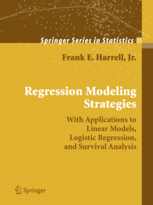Exercice de révision de la séance 1
|
|
|
|
Prevalence of coronary heart disease risk factors among rural blacks: a community-based study
(diabetes Dataset).
These data are courtesy of Dr John Schorling, Department of Medicine,
University of Virginia School of Medicine.
The data consist of 19 variables on 403 subjects from 1046 subjects who
were interviewed in a study to understand the prevalence of obesity, diabetes,
and other cardiovascular risk factors in central Virginia for African Americans.
According to Dr John Hong, Diabetes Mellitus Type II (adult onset diabetes) is
associated most strongly with obesity. The waist/hip ratio may be a predictor
in diabetes and heart disease. DM II is also agssociated with hypertension
- they may both be part of "Syndrome X". The 403 subjects were the ones who
were actually screened for diabetes. Glycosolated hemoglobin > 7.0 is usually
taken as a positive diagnosis of diabetes.
Background. Coronary heart disease (CHD) remains the most common cause of
death among blacks, and the difference in CHD mortality between blacks
and whites is growing. This trend may be due in part to higher rates of
CHD risk factors among blacks. This study was done to determine the
prevalence of CHD risk factors among a population-based sample of 403
rural blacks in Virginia.
Methods. Community-based screening evaluations included the
determination of exercise and smoking habits, blood pressure,
height, weight, total and high-density lipoprotein (HDL)
cholesterol, and glycosylated hemoglobin.
(C) 1997 Southern Medical Association
Il faudra peut être utiliser les fonctions suivantes
| read.xls() | du package | gdata | |||
| summary() | du package | base | |||
| <- | du package | base | |||
| [ | du package | base | |||
| get() | du package | base | |||
| na.omit() | du package | stats | |||
| attach() | du package | base | |||
| detach() | du package | base | |||
| ifelse() | du package | base | |||
| levels() | du package | base |
 Retour à la page principale de
(gH)
Retour à la page principale de
(gH)
